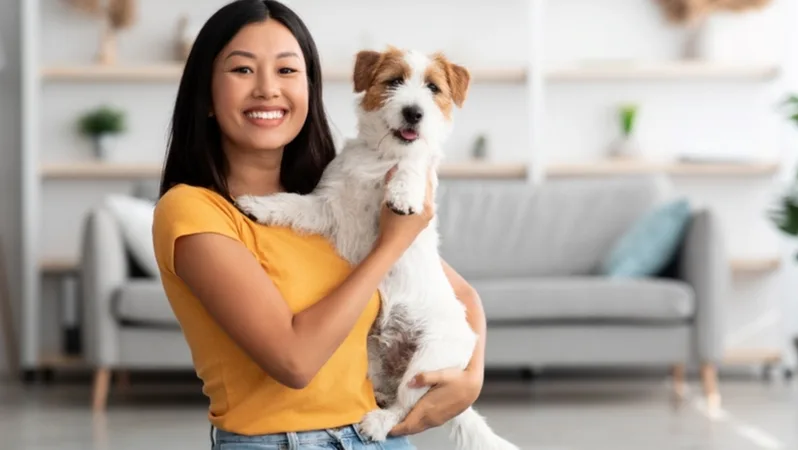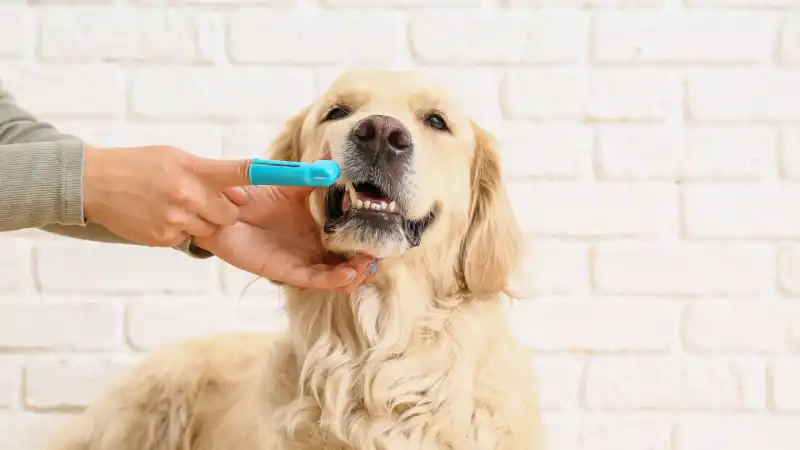Is My Dog Suffering from Anxiety?
Anxiety in dogs can often lead to destructive behaviors, physical discomfort, and even accidents indoors. Learn about your dog's anxiety and help him feel better!

Have you ever seen a dog happily walking along by his owner only to turn into a snarling, aggressive mass of teeth when another dog gets close? Or do you have a friend who always has to head home early from parties because her dog can’t be alone too long without destroying her furniture? It could be that these dogs suffer from anxiety and are acting out in the only way they know how. Dogs may become anxious due to fear, separation, age or medical conditions.
Symptoms
There are several symptoms a dog can exhibit when suffering from anxiety:
Panting
Pacing
Whining
Trembling
Yawning
Barking
Dilated pupils
Avoiding interactions
Urination/bowel movements
Destructive behavior
Dog Behavioral Problems
Sometimes the way your dog acts may not be to your liking but is a natural behavior for dogs. In these scenarios, it’s the owner who needs to be taught how to manage the behavior rather than punishing the dog for acting like a dog. A dog who barks at people who come to the door is exhibiting normal behavior of protecting his territory. The dog’s owner can train him to react in a different way, such as heading to his bed to wait for the guest.
Seek Help
If your dog exhibits behavior that is within the range (or just outside of the range) of normal behavior for a dog, but is challenging to manage, you may need to seek an animal behaviorist for counseling and treatment strategies. A dog who snarls and tries to bite someone at the door may be difficult to train out of this behavior on your own. Working with an animal behaviorist can help reduce the dog’s negative behavior and teach him a proper reaction.
Abnormal behavior that results from an emotional or mental health issue may take more managing and treatment than the others. You should work closely with your veterinarian as well as an animal behaviorist in managing and treating your dog through medications, environmental management and/or behavioral modification. These behaviors can develop due to genetic factors, a traumatic environment, insufficient early socialization, or medical conditions affecting brain development and health.
Separation Anxiety
When you leave your home, does your dog immediately throw a fit that he’s being left behind? If you often come home to destroyed furniture or suffer through whining and barking the moment you’re out of your dog’s eyesight, your dog may suffer from separation anxiety.
Why do dogs have separation anxiety?
Dogs are social by nature and prefer to be included in a pack. Boredom, loneliness, old age, or a previous trauma while alone can all contribute to the development of separation anxiety. Puppies should be taught to be comfortable spending time alone at a young age to reduce the likelihood of developing separation anxiety.
Symptoms of separation anxiety
Symptoms of separation anxiety include pacing, compulsive behaviors, crying and/or barking, urinating or defecating in the house, and destructive behavior when left alone. Destructive behavior is not only a nuisance to your home, but it can be dangerous for your dog, resulting in self-inflicted injury. Separation anxiety can be reduced in some dogs through behavioral training, crate training, exercising your dog thoroughly before leaving him alone, not making a big deal out of leaving and returning home, varying the routine before leaving the home, and providing toys to keep him busy while you’re away.

Every Dog and Cat Deserves the Pet Insurance of Champions
Get prize-winning care for your pets.
Medical Conditions
If your dog is ill or in physical pain, there is generally an increase in anxiety as a natural reaction. For your dog’s ancestors in the wild, being sick or hurt meant a more difficult time hunting and an increase in the chance of becoming prey.
Hearing/Vision Loss
A change in hearing or vision will scare most dogs and make them more reactive to their environment. Being unable to understand his environment can make your dog anxious; however, there are some things you can do to help your dog transition to life without one of their senses.
Getting Older
Old age can also create anxiety when a dog begins to become forgetful and his body doesn’t keep up quite as well as it did during his puppy years. There are several things you can do to keep your senior dog feeling young and help reduce his anxiety as he ages.
Medications
Some medications can also cause anxiety. If your dog recently started or stopped a medication, including flea, tick or heartworm preventatives, and you notice a change in your dog’s demeanor, contact your veterinarian.
General Anxiety
Dogs who were not well socialized or suffered from trauma during critical developmental periods may develop general anxiety. They can be reactive to experiences that reflect on trauma or may exist in a constant state of nervousness. An example of general anxiety would be a dog who was attacked by another dog as a young puppy acting out negatively when other dogs come too close.
Treatments
If you believe your dog may be showing signs of anxiety, it might be time to visit your veterinarian. Your vet will be able to determine if your dog is suffering from anxiety, and the correct treatment options available to you. If your dog suffers from generalized anxiety, medication may be a helpful tool in keeping him happier. If your vet decides that your dog is medically fit, the problem may be purely behavioral. Visiting a certified animal behaviorist can help you understand the root of your dog’s anxiety. The behaviorist will also be able to help treat your dog using counterconditioning, desensitization, and other training techniques.
A Happier Dog Starts at Home
Once your dog has been diagnosed with anxiety, it’s important to keep things consistent and predictable. A low-stimuli environment with no surprises can do wonders to calm an anxious dog. If your dog is nervous around other people or dogs, tie a yellow ribbon to his leash to alert others that your dog doesn’t like to be approached. As your dog’s owner, it’s up to you to help your dog live with his anxiety without causing him to miss out on all the fun of being a dog!
Pet Insurance for Behavioral Issues
AKC Pet Insurance offers coverage in our base plan for alternative treatments, such as behavioral therapy, when recommended by your veterinarian. Pet insurance can help to protect against unexpected veterinary bills so you can focus on helping your dog feel his best.

Every Dog and Cat Deserves the Pet Insurance of Champions
Get prize-winning care for your pets.

Mary comes to AKC Pet Insurance with an extensive background in animal care. As a lifelong animal lover, she has a passion for promoting pet health and wellness. Mary lives in Kentucky with her orange kitty, "Cat" and her dog, " Wubbi".
READ MORE ARTICLES

